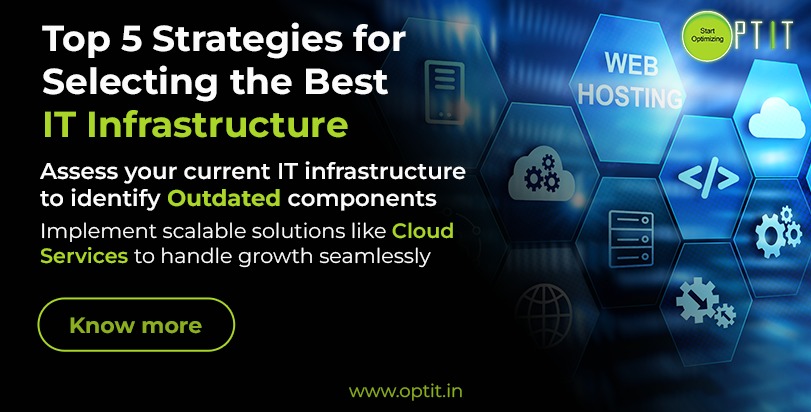
Whether you’re a business with existing IT infrastructure looking to optimize, or a new enterprise gearing up for a robust start, making the right IT choices can define your operational efficiency and success. In this blog, we explore top strategies tailored for established businesses and startups to help you select the best IT infrastructure for your needs.
Begin by conducting a comprehensive assessment of your existing IT infrastructure. Identify components that are outdated, underperforming, or no longer align with your business objectives. This evaluation should cover hardware, software, network architecture, and security protocols. Utilize IT consulting services to get an expert analysis and ensure that all aspects of your infrastructure are scrutinized.
As your business grows, so do your IT requirements. Opt for scalable solutions that allow your infrastructure to expand without significant overhauls. Cloud-based services are particularly advantageous due to their flexibility and scalability. Whether it’s SaaS, PaaS, or IaaS, integrating cloud solutions can offer the adaptability needed to handle increased workloads seamlessly.
Security on the internet is critical. By improving security protocols, you may fortify your current infrastructure. Put intrusion detection systems, sophisticated firewalls, and frequent security audits into practice. Maintaining current data encryption standards and implementing multi-factor authentication (MFA) are crucial measures to prevent unwanted access. Solid security procedures can be upheld with the assistance of a reliable IT services company.
Businesses can host several virtual computers on a single physical server thanks to virtualization technology, which maximizes resource utilization and lowers expenses. This method improves efficiency and flexibility, which makes it simpler to handle workloads and guarantee business continuity. Examine the capacity of your servers now in use, and think about virtualization as a way to improve disaster recovery and performance.
Ensure that your new IT parts work well along with your current systems. Selecting infrastructure options that work with the hardware and software you already have is part of this. Optimizing integration reduces disturbances and improves overall performance. To choose goods and services that complement your current configuration and ensure the viability of your business operations, speak with experts in IT infrastructure.
Consider the precise IT needs based on your goals and business style. It is easier to choose the best infrastructure when you are aware of your needs. For example, a service-oriented company may prioritize secure communication tools and CRM software, whereas an e-commerce platform could need powerful servers and a lot of bandwidth. Thorough requirement analysis guarantees that you make the proper early-stage technology investments.
Cloud computing provides a scalable and reasonably priced solution for startups. Cloud services eliminate the need for substantial upfront investments in physical hardware and provide the flexibility to scale resources as your business grows. Choose from a range of cloud service models such as IaaS, PaaS, and SaaS based on your needs. Improved accessibility and cooperation are key benefits of cloud solutions, which are essential in a fast-paced startup setting.
Integrate robust cybersecurity measures into your IT infrastructure from the beginning. This includes firewalls, encryption, anti-virus software, and secure network protocols. Cyber threats can be devastating for a new business, and early investment in security can prevent significant losses. Consider consulting with cybersecurity experts to establish a comprehensive security framework that evolves with your business.
Invest in modular IT infrastructure that can grow with your business. Modular systems allow you to add or upgrade components without overhauling the entire setup. This approach provides the flexibility to adapt to changing business demands and technological advancements. Scalable solutions such as cloud services and virtualization should be at the core of your infrastructure planning.
There are many obstacles to overcome when starting a business, and having the appropriate IT support can help a lot. To make sure that your infrastructure is built with dependability and efficiency in mind, spend money on managed services and IT consultancy. You may concentrate on your main business operations by hiring expert IT consultants to help you choose the best technology and give continuous support.
In conclusion, whether you’re upgrading an existing system or starting from the ground up, leveraging advanced digital infrastructure services and solution IT infrastructure can dramatically boost performance and scalability, setting your business up for lasting success. By adopting these strategies, companies can master the complexities of IT infrastructure selection and lay a robust foundation for growth and innovation.
For expert guidance and tailored IT solutions, contact us at info@optit.in and get comprehensive support designed specifically for your business needs. Let us help you future-proof your IT environment and drive your business forward with confidence!